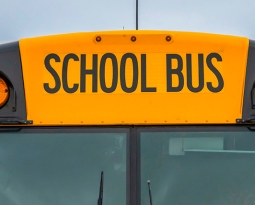Can You Hear Me Now? The Health Consequences Of Noise Pollution
 On November 11, the amazing Livable Buckhead staff hosted an event celebrating the groundbreaking for a new segment of PATH400. The PATH400 is a large part of the Buckhead Sustainability Action Plan highlighting visions in the Mobility and Health Wellness sections. ‘Build upon PATH400 to provide greater, safer bicycle and pedestrian opportunities and create a viable alternative commute option for local commuters’ and ‘utilize PATH400 as a tool for healthy living by implementing wellness-oriented programing’ are specific goals in those sections. The Alternative Commute Program and the Shuttle Circulator both emphasize the reduction of vehicles on the road with recent additions of electric shuttle buses to the fleet.
On November 11, the amazing Livable Buckhead staff hosted an event celebrating the groundbreaking for a new segment of PATH400. The PATH400 is a large part of the Buckhead Sustainability Action Plan highlighting visions in the Mobility and Health Wellness sections. ‘Build upon PATH400 to provide greater, safer bicycle and pedestrian opportunities and create a viable alternative commute option for local commuters’ and ‘utilize PATH400 as a tool for healthy living by implementing wellness-oriented programing’ are specific goals in those sections. The Alternative Commute Program and the Shuttle Circulator both emphasize the reduction of vehicles on the road with recent additions of electric shuttle buses to the fleet.
Atlanta Mayor Andre Dickens was quoted at the event stating, “Trails like PATH400 help make Atlanta a healthier city’. The programs simultaneously remove emissions from the air and reduce noise pollution improving the health of communities while preventing future health hazards.
With the new funding for electric school buses being awarded by the Biden Administration and Livable Buckhead’s Sustainability Action Plan, we have been checking out the tea on the EV’s contribution to the protection of our children and communities. When you think of noise pollution, a person may only equate it with hearing loss. Studies have shown areas with increased noise pollution can impact health in many other ways. Communities with increased noise exposure due to high volume transportation see more negative cardiovascular consequences with a 72% higher heart attack rate than its less trafficked counterparts. Other negative effects on health include sleep disruptions, communication impairments, mental health issues, memory impairment, attention deficits, low birth rates, childhood learning delays, and decreased cognitive ability. Loud noises can signal your body to be in an alert position sending stress signals of fight or flight and over time can impair your immune system. Children are more susceptible to noise pollution which makes the health consequences more severe. Researchers have found loud noises can impair cognitive development in our children, explicitly reading comprehension.
Other victims of noise pollution are animals and plants. Animals rely on their sense of hearing to survive escape from predators, ability to hunt, and communication while locating a mate. It is not only wildlife that feels the results of noise pollution, but our domestic pets are also a victim. Family pets have the potential to be more aggressive due to the stress on their alert system being at a constant fight or flight level. Several pets and wildlife species have increased call volumes to compete with loud sound levels. Our regional native plants are being impacted as their pollinators relocate to a quieter environment. The pollinator’s reproduction cycle can be damaged due to communication disruption resulting in total population reduction. The effects of loud noises on trees and plants have a much longer recovery time frame than humankind. The relocating animals fleeing noise pollution may find a different food source in a plant species disrupting the order of the native area. Loud sound disruptions can gravely alter the fragile ecosystems. Check out the interactive map to see your areas noise levels DOT National Transportation Noise Map.
What can we do as climate crusaders for our community to decrease noise pollution?
What can you do individually to protect yourself and family from loud noises? Visit the next section of the series and find out.
Teresa Perkins is a climate change and sustainability journalist, who is creating research-based climate change content pertaining to sustainable energy at local, national, and global level for publication and distribution. She partners with non-profit organizations for innovative ideas and sustainability projects and connects global UN Climate Change reports to local initiatives.







